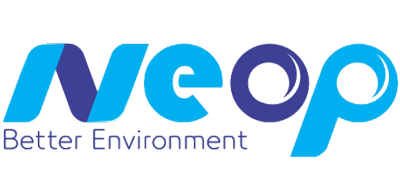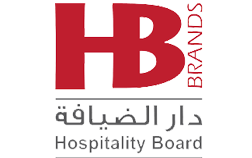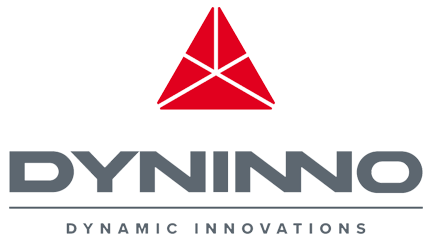Engaging and managing a hybrid team can be a daunting task, especially if you’ve never worked in a hybrid setting. Or if you’re coming out of a fully-remote role. This applies to hiring managers, employees, and HR personnel alike.
Team management in general, and managing remote and hybrid teams specifically, requires personal and technical skills. Not to mention training.
Hybrid work is one of the top HR industry trends for 2024. Unfortunately, few companies offer training to new managers. Especially ones they promote.
Nearly 70% of managers in a Gallup survey in the US “have had no formal training in how to lead a hybrid team.”
In this article, we’ll be offering tips and best practices for managing hybrid teams. Whether you’re new to hybrid work, want to implement hybrid work in your company, or want to improve hybrid team management, this article is for you.
Similarly, if you’re a manager or team leader, use these tips to establish yourself as an effective leader and manager.
What does a hybrid workplace mean?
A hybrid workplace is a company that offers a combination of work-from-home with a few days in the office.
In most hybrid work settings, a company would offer employees remote work for 2 or 3 days per week and ask them to come to the office for the remaining days.
Some hybrid workplaces offer remote work perks and ask employees to come to the office once a week or even twice a month.
“Meeting up in the office even if it’s once a week or once a month helps teams connect and improves collaboration,” says Mahinaz ElBaz, research and analysis manager at Egypt Oil & Gas.
Hybrid vs remote teams: Similarities & Differences
Before we uncover the best practices for managing hybrid teams, let’s explore the similarities and differences between hybrid and remote teams across several levels.
- Work location: Both hybrid and remote work involve working from home (or any other location). However, remote work means you work away from the office at all times. Fully-remote companies often don’t have offices.
- Face-to-face interactions: Hybrid work offers more face-to-face interaction as employees go to the office at least once a week. On the other hand, there’s no personal interaction with others in remote work.
Aside from communicating via email, software like Slack or even WhatsApp, or occasional phone calls, there is no face-to-face interaction in a remote work environment. This is one of the top reasons many remote workers feel isolated, lonely, or disengaged when working remotely.
- Flexibility: Remote work offers the highest level of flexibility as remote employees can work from anywhere in the world. From their homes, co-working spaces, the beach, anywhere.
Meanwhile, for hybrid workers, flexibility is limited by the number of days they have to visit the office. This means it may be harder for them to travel while working.
- Commute: With remote work, there is no commute. Unless you count walking from your bedroom to your at-home office or the living room.
Hybrid teams, meanwhile, need to move between working remotely and commuting to the office. This involves waking up early, getting dressed, preparing lunch, and driving to the office, wasting several hours each time.
- Collaboration: One of the top benefits of hybrid work is easier collaboration as team members get to meet at least once a week. Hybrid workers can simply walk up to a team member to discuss an issue or make a request.
Meanwhile, collaboration requires more effort for remote employees where communication is limited to email, messaging platforms, and, if applicable, a phone call.
- Talent pool: Companies offering hybrid work are limited by their local talent pool. On the other hand, companies hiring remote employees can access a sizable talent pool spanning the entire world.
They can use employer of record service providers like Tawzef to manage recruitment, compliance, and payroll for their international employees.
- Focus: Working remotely can mean fewer distractions as opposed to working in the office, where you may have noisy coworkers.
Research by Hubstaff found the average focus time for remote workers to be higher than their in-office counterparts. In a standard 5-day work week, remote employees averaged 22.75 hours of focused time per week compared to 18.6 hours for in-office workers.
- Business expenses: Fully-remote companies save on various expenses. From monthly rent, in-office equipment, food-and-beverage expenses, among other expenses as opposed to fully in-house and hybrid companies.
That said, fully-remote companies can purchase equipment to their remote workers or compensate them for bringing their own devices such as laptops.
- Boundaries: Hybrid employees often enjoy the perks of 9-to-5 work, especially when they go to the office, ensuring better work boundaries.
On the other hand, for remote workers, the lines between work and home life often blur. Especially as many feel like their home is an extension of their workplace. This may lead them to work longer or odd hours, or both.
Sometimes managers will expect work-from-home employees to work longer compared to their in-house or hybrid counterparts, simply because they skip the commute.
Interestingly, research by Accenture found 83% of employees prefer a hybrid work environment. But despite that, more companies are investing in fully in-house work settings.
Best practices for managing hybrid teams
So, how do you manage a hybrid team effectively without blurring the lines of boundaries, duties, and home needs?
Let’s find out.
1) Team building is a must
“Team building. Team building. Team building is essential when managing remote and hybrid teams,” stresses Mahinaz ElBaz, research and analysis manager at Egypt Oil & Gas.
“You need to offer team-building activities regularly,” explains ElBaz. Examples of team activities include games to get to know one another, business and client scenarios, team outings, among others.
2) Don’t assume ‘one size fits all’
“One of the biggest mistakes I see companies making is assuming a ‘one-size-fits-all’ with hybrid workplaces,” says Waleed Rashed, Founder and CEO of SIDEUP.
“Every company is different. The hybrid model needs to be tailored to your organization and its needs. You can’t replicate another company’s model 100%,” Rashed explains.
With teams in Egypt and Saudi Arabia, SIDEUP has been testing the hybrid work model and how managers can manage their hybrid teams will ensuring the best results for all.
“We’re always testing to see which aspects of hybrid workplaces work best for our teams,” Rashed stresses.
For startups, you can’t replicate the hybrid model for a company that’s in a different stage than you, he adds.
3) Keep brainstorming for the office
Not all activities are great in a remote setting. Some are best left to the in-office part of the hybrid work model.
“If the team needs to brainstorm for a project or have a creating thinking session, this is best left for when the team is in the office,” advises Nadine Abou El Atta, CEO of Ankh for Technology Services.
4) Ensure strong communication
Part of managing a successful team, whether fully in-house, fully-remote, or a hybrid team is being a strong communicator.
“Remote and hybrid work reduce relationships between team members. So, it’s important to ensure strong communication between employees and between members and their and manager,” notes ElBaz.
“This is especially important if a manager manages multiple teams whose work is connected or builds up on one another,” she says.
Both Rashed and Abou El Atta agree about the importance of improving internal communications between team members and managers.
One example, Rashed provides is having all current and upcoming meetings for team members available for all to see via a calendar, such as Google Calendar.
One-to-one conversations between team members and their direct managers are all important for handling sticky situations, managing schedules, or simply voicing concerns and problems.
5) Take it step by step
Switching from fully in-house or fully remote to a hybrid work place should be gradual.
“When switching to hybrid, you need look at it as a step-by-step process,” says SIDEUP’s CEO.
Rashed suggests that if a company wants explore or implement the hybrid work model, managers should ask others in other companies about their experiences and recommendations.
6) Set expectations
To manage a remote or hybrid team effectively, you need to set expectations for each team member early on. This includes setting delivery deadlines, when to report back to your manager, tasks and to-do lists,…etc.
Team members need to know what to expect from their manager and when to report to them, while managers need to clarify when they will touch base with their team members.
It’s important that when setting expectations you avoid acting as a micromanager. This is one of the biggest issues managers face when managing remote and hybrid teams.
Expectations can also include certain team-specific rules like not being able to take time off before major deadlines or specific situations.
7) Build an environment of trust
When you set clear expectations, you can build trust among your team members and between the manager and their team.
“Set clear deliverables and a clear plan. That way the manager knows when certain tasks will be completed, while the team earns flexibility perks and other privileges in return,” explains ElBaz.
8) Watch for burnout and stress
Part of being a successful manager, whether for a hybrid or fully-remote team, is getting ahead of work burnout.
Increased workloads and stress along with little-to-no life-work-balance are the top culprits behind employee burnout. This applies to both your team members and you as a manager.
To get ahead of burnout, you need to be aware of signs of changing behavior among your team.
For example, if someone was once talkative but suddenly become less and less engaged or friendly. Similarly, if someone is regularly starting their work-from-home days late or if their performance is on the decline. These can all be signs of burnout.
As a manager, it’s important to talk to and support your team. Help them prioritize their workloads, see if one person is overwhelmed more than others and distribute the work accordingly, among other ideas.
If the work is too much for your team, perhaps it’s time to add a new member or find an intern to support your team during the summer or winter season.
9) Prioritize tasks and needs
With hybrid team management, part of a manager’s role is to prioritize tasks, needs, and delivery deadlines. They should do this for each team member and keep communications open during working hours.
This helps managers and team members alike ensure a smooth work process and commitment to deadlines.
10) Consider how different people are
It may seem obvious but one thing managers often forget is that people behave differently. This appears clearly in a hybrid and remote setting where team members don’t see each other in-person.
“Your team is not all the same. Everybody perceives things differently. Given their background, their emotional and psychological standpoint, their upbringing…etc. The gap is narrow when we’re from the same culture. The gap really expands when we’re from different cultures,” explains Abou El Atta.
11) Create ‘catch-up’ events
One of the best practices for managing hybrid teams is having a coffee chat, water cooler chat, or daily stand-up.
“People are social beings,” notes Abou El Atta. “Regardless of our work ethics and commitment, we tend to work better when we’re in the same room. That’s why the biggest issue I’ve noticed is when part of the team is operating in a hybrid work environment, while another part of the team is fully-remote. The latter group fall behind. It’s an intangible quality that detailed documentation can’t mimic,” she says.
So, what can the manager of a hybrid team do to overcome this?
“Make sure you have a social daily catch-up like coffee time. It helps,” Abou El Atta advises.
SIDEUP’s CEO agrees with importance of having ‘catch-up’ events, noting they’re an opportunity for employee engagement and social interaction.
12) Explain the importance of in-company presence
Employees will often take the in-office days for granted. As a manager, it’s your duty to explain that in-office days are crucial for team members.
Being in the office, collaborating with others, builds various interpersonal and soft skills.
Working with others directly can reduce the fear of approaching others and making conversations. It also builds confidence, which is often reduced by remote work, where there is limited connection and direct engagement.
“The office also builds leaderships skills,” notes Rashed.
So, whether your team realizes it or not, they benefit from going to the office once or twice a week.
However, it’s important, as manager, you coordinate in-office days for the team, stresses El Baz.
If one team member goes to the office and no one else does, the in-office engagement doesn’t work and your team doesn’t get the in-office benefits they’re supposed to get, she adds.
13) Be flexible
“Flexibility is important for hybrid and remote workers,” comments ElBaz.
Unfortunately, many employees use flexibility and working remotely negatively, hurting the trust between the manager and employee.
That’s why ElBaz recommends not being flexible when you’re just starting out as a hybrid team manager.
14) Don’t divide your team between hybrid and fully-remote
One of the perks of working in a hybrid environment is the flexibility given to managers and team members alike.
For managers, hybrid work environments allow them to recruit calibers they may not have been able to hire if it were a full-time in-office position.
Ankh for Technology Services’ CEO has “always preferred the hybrid work model” because it allowed her to hire “excellent calibers.” Otherwise, she would not have been able to hire these people full-time from the office.
Sometimes people live far away from office locations, have family commitments, or are studying for diplomas, masters or PhD degrees. Like remote work, a hybrid setting helps companies hire these candidates while giving them the flexibility they need.
However, Abou El Atta recommends managers avoid dividing their team into groups of hybrid and fully-remote.
Separating team members will reduce the connectedness of the team and their ability to collaborate.
15) Engage team members
Employee engagement is a concept that’s been front-and-center for the past few years. It builds employees’ mental and emotional connections to the organization they work for.
Gallup defines employee engagement as “the involvement and enthusiasm of employees in their work and workplace.”
In remote and hybrid settings, employee engagement contributes to empowerment and retention.
Rashed, El Baz, and Abou El Atta agree about the importance of employee engagement for hybrid teams.
“It’s upon the manager to try and engage the team and create a community in the virtual side of hybrid team management. They can do so via virtual discussions to maintain a friendly work environment and support their team members,” comments Abou El Atta.
“Team building and employee engagement go hand-in-hand,” adds El Baz.
Meanwhile, Rashed cites in-house events like company welcome, hosting a company breakfast or lunch, and other in-person activities as important hybrid team engagement opportunities.
“Team members should not miss those events,” he says.
Wrapping it up
Managing a hybrid team, or several hybrid teams, can be stressful at first. But taking recommendations and learning from others’ mistakes can speed up the process of switching to hybrid work for your organization.
Moreover, following the above best practices for managing hybrid teams will help you skip much of the agony and time wasted in making your own mistakes.
It’s also important to train managers and team leaders on how to manage their teams in a hybrid setting. Your HR team also needs to be familiar with how hybrid teams operate so both HR and direct managers can track progress accordingly.
SIDEUP’s CEO suggests using a tracking system and using key performance indicators (KPIs) for managers and team members to maintain strong performance.
Finally, don’t forget the importance of engaging your hybrid teams. You can conduct in-house events like a company breakfast for the whole company or each manager can do so for their team.
Creating a healthy work environment for hybrid teams not only helps you retain employees for longer, but also improves your company culture and your employer brand.
Further reading:
- How to Create an Employee Rewards and Recognition Program
- 6 Factors Affecting Employee Turnover and How to Fix Them
- How to Improve Your Team’s Productivity: 11 Tips to Follow
- How can technology increase productivity in the workplace?
- 7 Reasons Why Performance Appraisals Are Important
- 11 HR KPIs and Metrics to Measure for Better Business Performance
- What Are the Most Important Recruiting KPIs?
- Everything You Need to Know About Employee Training and Development KPIs
- Self-Development for Work: How to Create a Self-Development Plan
- Employee Handbook: 11 Essential HR Policies for Employees
- How to Create a Compensation & Benefits Policy? 5 KPIs to Measure
- How to Create a Women-Inclusive Compensation & Benefits Strategy



























































































































